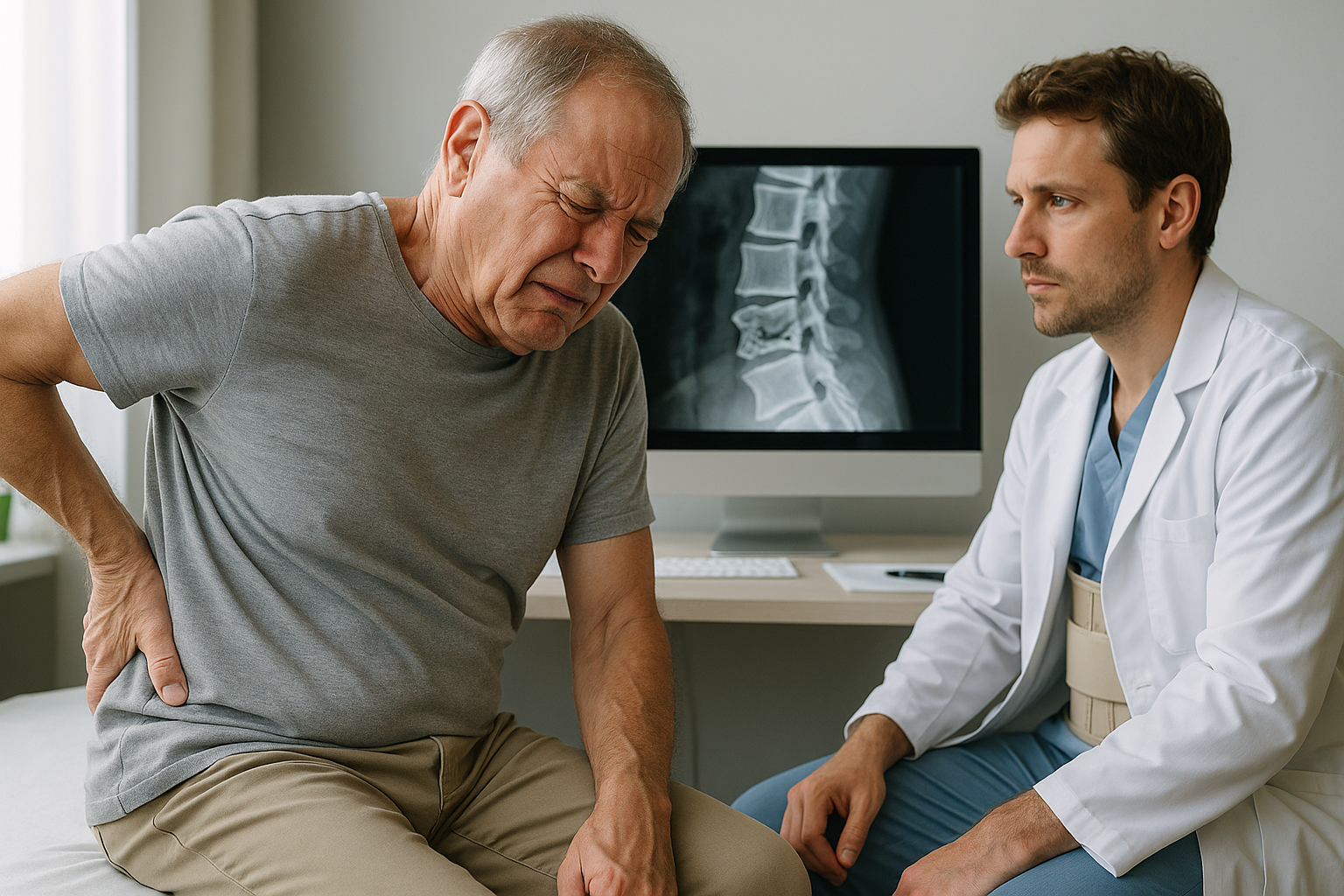In today's digital age, neck strain has become an all-too-common ailment affecting millions worldwide. As we increasingly rely on technology for work, communication, and entertainment, our necks bear the brunt of prolonged computer use and constant smartphone browsing. This modern lifestyle habit often leads to discomfort and pain, a condition commonly referred to as "text neck." With screens dominating our daily routines, it's no wonder that neck strain is on the rise.
Why addressing neck strain is crucial
Neck strain can significantly impact daily life, hindering productivity and overall well-being. The discomfort can range from a mild, persistent ache to severe pain that limits movement and affects concentration. Left unaddressed, neck strain can lead to chronic issues, affecting not just physical health but also mental and emotional states. Recognizing the importance of tackling neck strain, it's vital to approach the problem holistically. This means balancing medical advice with ergonomic solutions to create a comprehensive strategy for managing and preventing neck strain.
What you'll learn in this post
This blog post will guide you through the essential aspects of neck strain, from identifying symptoms and understanding causes to exploring effective treatment options and preventive measures. You'll gain insights into common symptoms such as achy or throbbing pain, muscle spasms, and stiffness. We'll delve into the primary causes, including poor posture and repetitive motions, and discuss how trauma and stress can exacerbate the problem. Additionally, we'll explore age-related changes that contribute to neck strain.
Our focus will be on providing practical solutions, particularly ergonomic adjustments that can make a significant difference in reducing neck strain. By the end of this post, you'll have a clear understanding of how to manage neck strain effectively and prevent it from disrupting your life. Whether you're seeking relief from current discomfort or looking to avoid future pain, this guide offers valuable insights and actionable advice to help you live a pain-free life.
Understanding the symptoms and causes of neck strain
Neck strain manifests through a variety of symptoms that can range from mild discomfort to severe pain. Common symptoms include an achy or throbbing sensation, muscle spasms, stiffness, and pain that intensifies with movement. In some cases, individuals may experience sharp pain that radiates into the shoulders or upper back. It's crucial to recognize severe symptoms that warrant immediate medical attention, such as sudden onset of pain following trauma or neurological signs like numbness and weakness.
Primary causes of neck strain
Several factors contribute to the development of neck strain, with poor posture being one of the most prevalent. The term "text neck" is often used to describe the strain caused by prolonged periods of looking down at smartphones and other devices. Awkward sleeping positions and holding the head at an odd angle for extended periods can also lead to neck discomfort.
Repetitive motion is another significant cause, particularly when engaging in activities that involve frequent neck movements or starting new, strenuous exercises. Trauma, such as whiplash from car accidents or falls, can cause sudden and severe neck strain. Additionally, psychological stress often results in muscle tension, further exacerbating neck pain. Age-related changes, including degenerative conditions like arthritis, also play a role in the development of neck strain, especially in older adults.
Effective treatment options for neck strain
Managing neck strain involves a combination of home remedies and, in some cases, medical interventions. One of the first steps is rest and activity modification. It's essential to take breaks from activities that strain the neck and to adjust movements to prevent further injury. Over-the-counter medications, such as ibuprofen or acetaminophen, can provide pain relief, while topical analgesics offer targeted relief for muscle pain.
The role of cold and heat therapy
Cold and heat therapy are effective methods for managing neck strain. Ice packs are beneficial for reducing acute inflammation, while heat therapy helps relax tense muscles. Alternating between cold and heat can enhance the therapeutic effects, promoting faster recovery.
Physical therapy and stretching
Physical therapy is a cornerstone of neck strain treatment, providing guided exercises and stretches that improve flexibility and strength. These exercises not only aid in recovery but also play a crucial role in preventing future episodes of neck strain. Additionally, massage and manual therapies, including acupuncture, can relieve muscle tension and promote relaxation.
When medical intervention is necessary
In cases where neck strain symptoms are severe or persist despite home treatment, medical intervention may be required. This can include imaging tests to rule out serious conditions, prescription medications, or in rare cases, surgery. Consulting with a healthcare professional is essential for determining the appropriate course of action.
By understanding the symptoms and causes of neck strain and implementing effective treatment strategies, individuals can alleviate discomfort and prevent future occurrences. The next section will delve into preventive measures, focusing on ergonomic solutions and lifestyle modifications that promote neck health.
Prevention strategies for neck strain
Preventing neck strain is as crucial as treating it. By making some simple yet effective changes to your daily routine and environment, you can significantly reduce the risk of developing neck pain. Here are some strategies to consider:
Ergonomic adjustments
One of the most effective ways to prevent neck strain is by optimizing your workspace. Ensure your chair is at the right height, allowing your feet to rest flat on the floor. Your computer monitor should be at eye level, about an arm's length away, to avoid tilting your head up or down. Additionally, position your keyboard and mouse so that your elbows are at a 90-degree angle, reducing the strain on your neck and shoulders.

Men's Posture Shirt™ - Black
Patented NeuroBand™ technology shirt that supports posture and relieves neck, shoulder & back pain.
Posture improvement
Maintaining a neutral spine position is key to preventing neck strain. Sit up straight with your shoulders relaxed and your back supported by the chair. Avoid slouching or leaning forward, especially when using devices. Regularly check your posture throughout the day to ensure you're not slipping into bad habits. Below is a table illustrating proper versus improper posture:

Women's Posture Shirt™ - Black
Patented Posture Shirt™ for women designed to activate muscles and relieve neck and back tensions.
| Proper Posture | Improper Posture |
|---|---|
| Head aligned with spine | Head leaning forward |
| Shoulders relaxed | Shoulders hunched |
| Back supported | Slouched back |
Lifestyle modifications
Incorporate regular exercise into your routine to strengthen the muscles that support your neck. Activities like yoga and Pilates can improve flexibility and posture. Additionally, manage stress through relaxation techniques such as meditation or deep breathing exercises, as stress can contribute to muscle tension. Remember to take frequent breaks during work or prolonged device use to stretch and reset your posture.
Frequently Asked Questions
What are the best exercises to relieve neck strain?
Simple exercises such as neck tilts, shoulder shrugs, and chin tucks can help alleviate neck strain. These can be performed at home or in the office to maintain flexibility and reduce tension.
How can I tell if my neck pain is serious?
If your neck pain is persistent, severe, or accompanied by symptoms like numbness, weakness, or headaches, it is advisable to consult a healthcare professional. These could be signs of a more serious condition.
Can ergonomic aids really help with neck strain?
Yes, ergonomic aids such as adjustable chairs, monitor stands, and supportive pillows can significantly reduce neck strain by promoting proper posture and reducing pressure on the neck.
How long does it typically take to recover from neck strain?
Recovery time varies depending on the severity of the strain and adherence to treatment strategies. Mild strains may improve within a few days, while more severe cases could take several weeks. Consistent application of preventive measures can expedite recovery.
Are there any specific products recommended for preventing neck strain?
Products such as ergonomic chairs, standing desks, and cervical pillows are recommended to support neck health. These aids help maintain proper posture and reduce the likelihood of strain.
By implementing these prevention strategies and understanding the importance of ergonomic adjustments, you can effectively manage and prevent neck strain, ensuring a pain-free and productive life.
Källor
- Spine-Health. (n.d.). "Neck Strain Treatments and Prevention."
- Mayo Clinic. (n.d.). "Neck Pain - Diagnosis and Treatment."
- American Academy of Orthopaedic Surgeons. (n.d.). "Neck Sprain."
- Aurora Health Care. (n.d.). "Neck Pain Relief."
- Healthdirect. (n.d.). "Neck Pain."
- American Family Physician. (2020). "Diagnosis and Management of Acute Neck Pain."
- NHS. (n.d.). "Neck Pain and Stiff Neck."
- Cleveland Clinic. (n.d.). "Neck Pain."
- MyHealth.Alberta.ca. (n.d.). "Neck Pain: After Care."


















